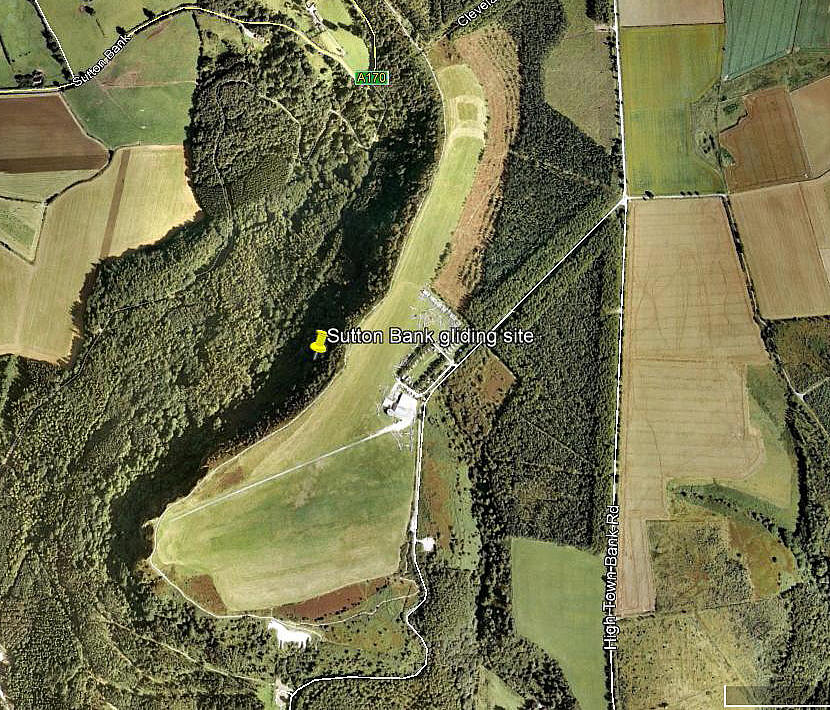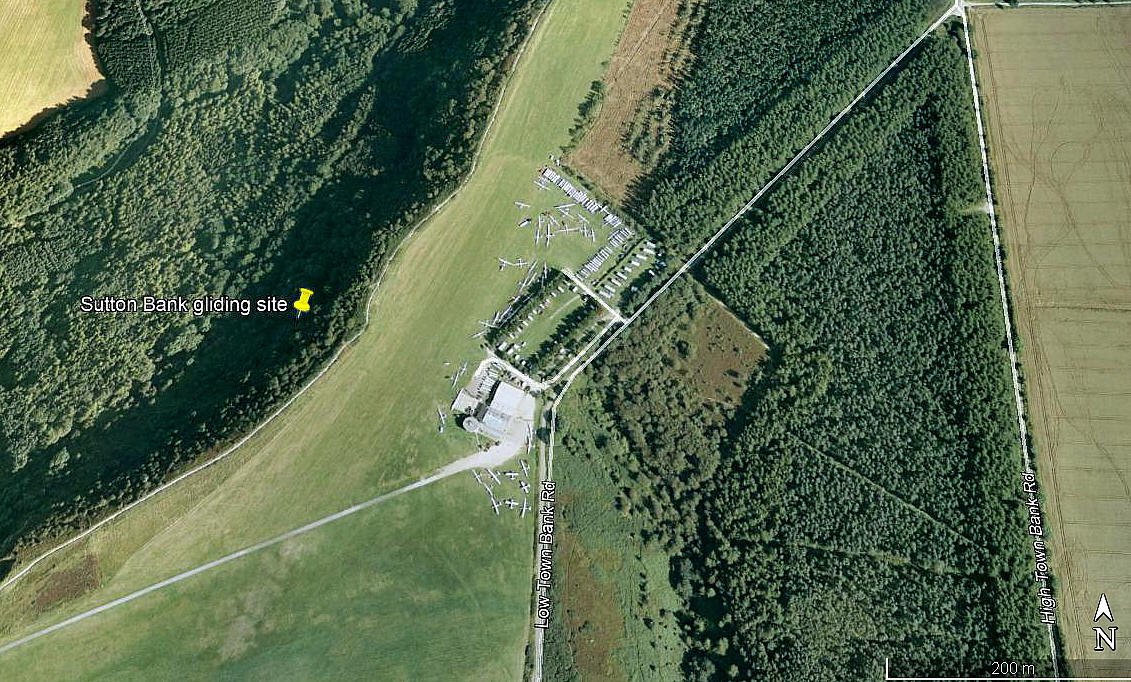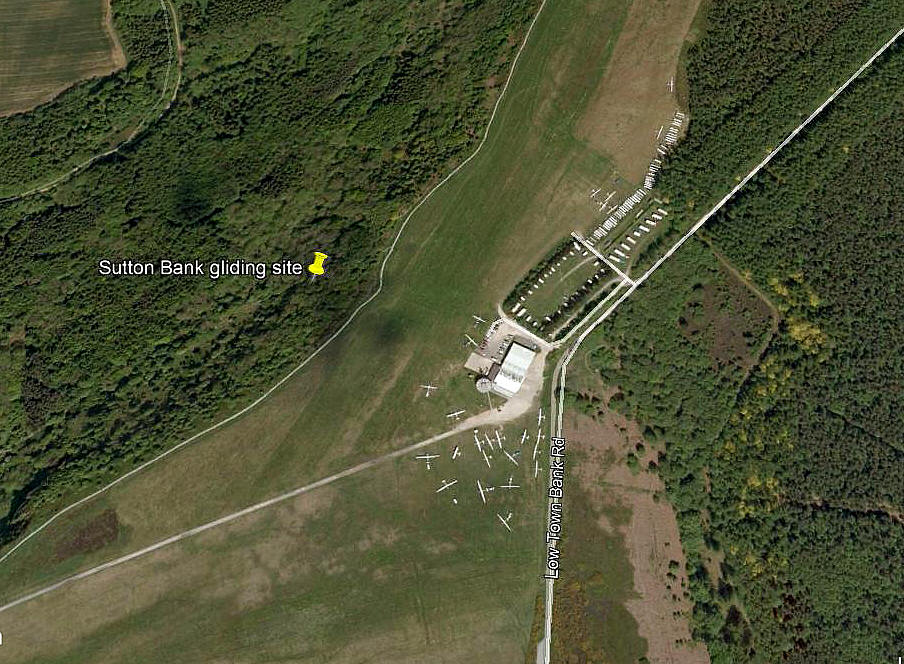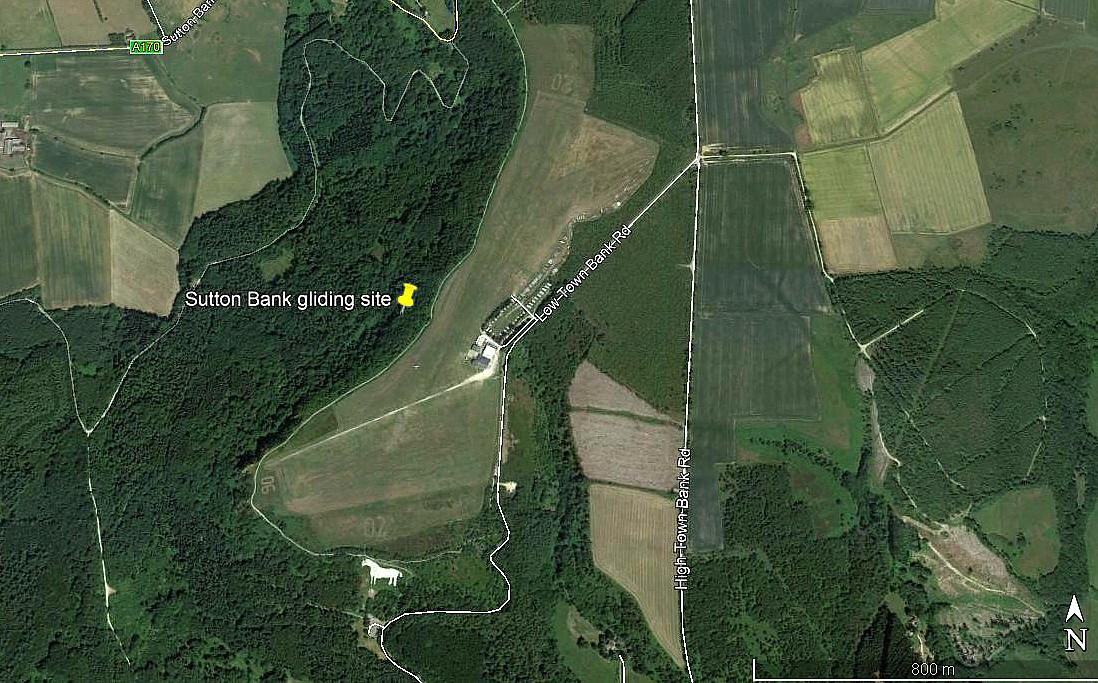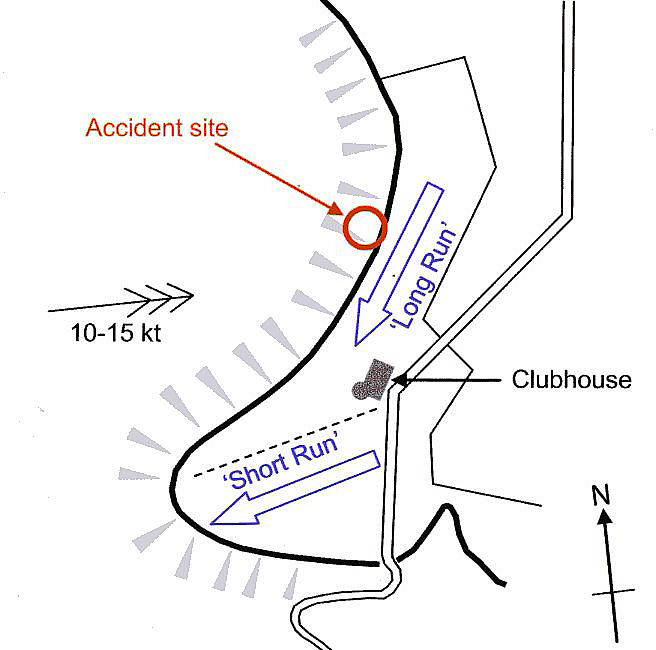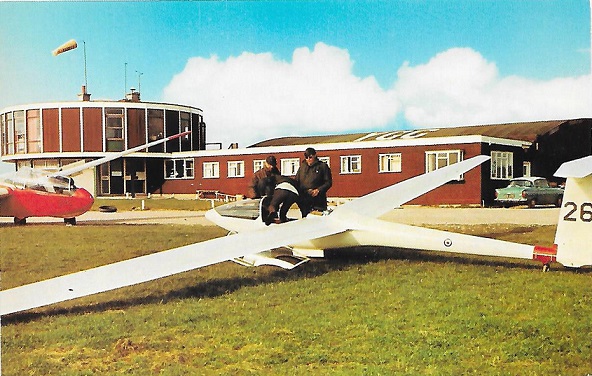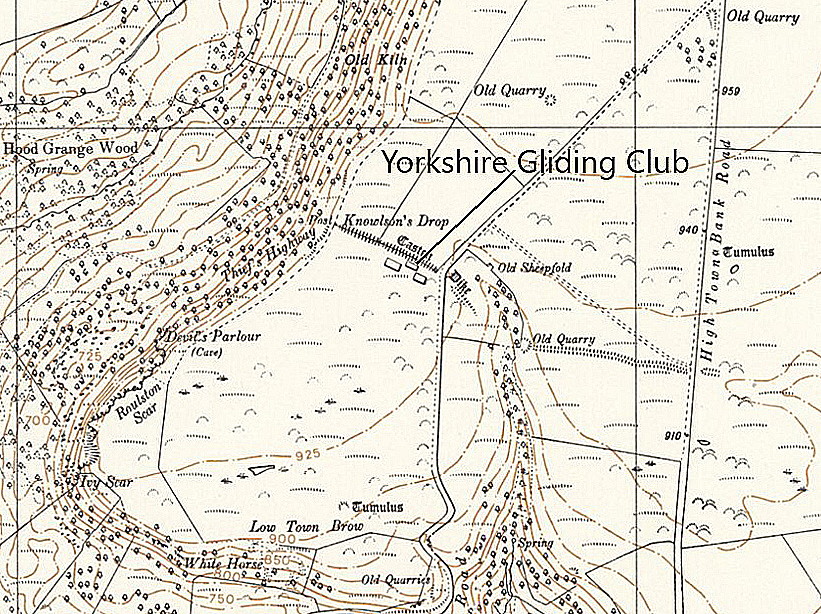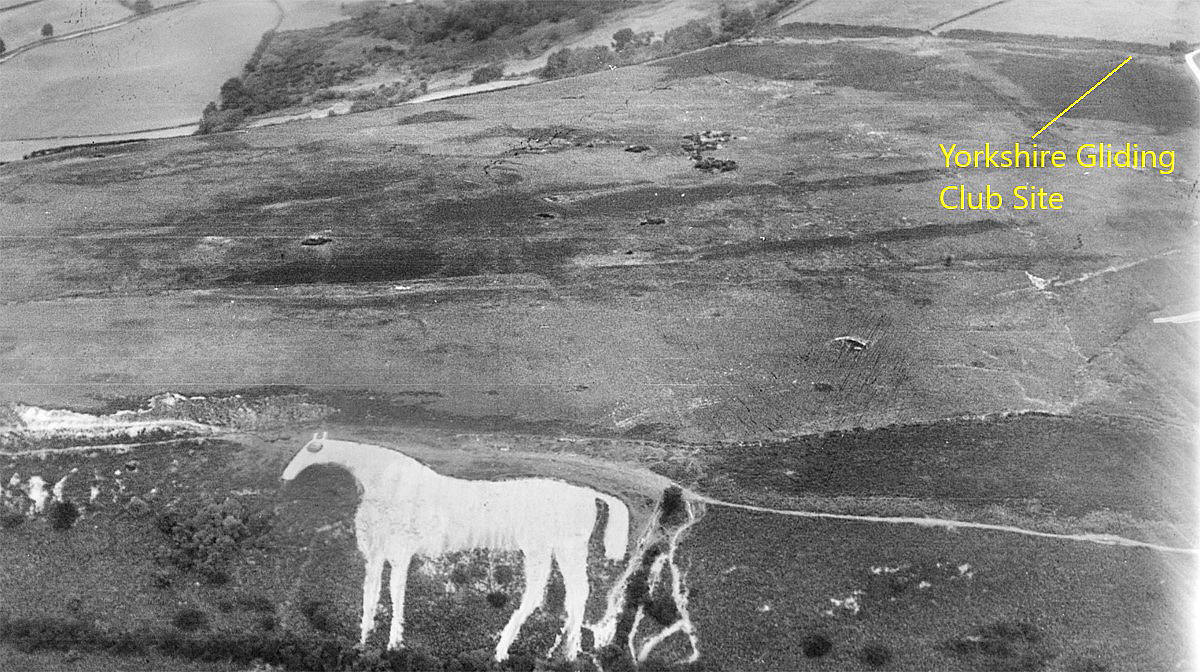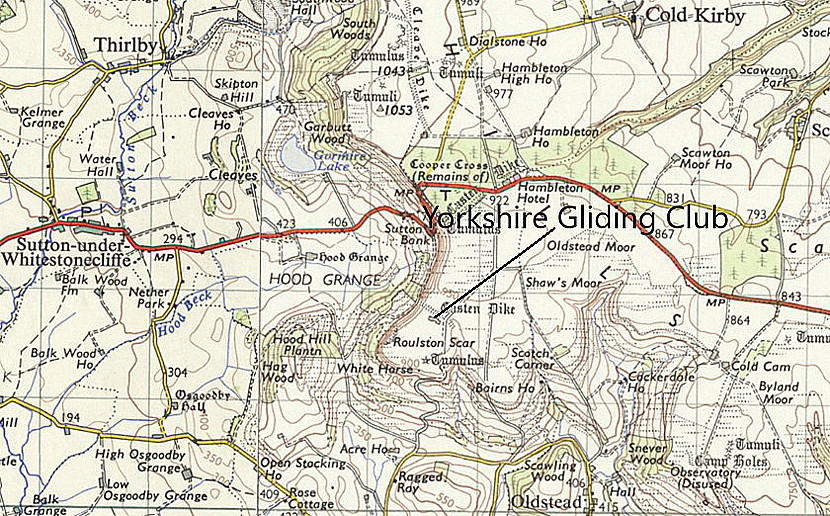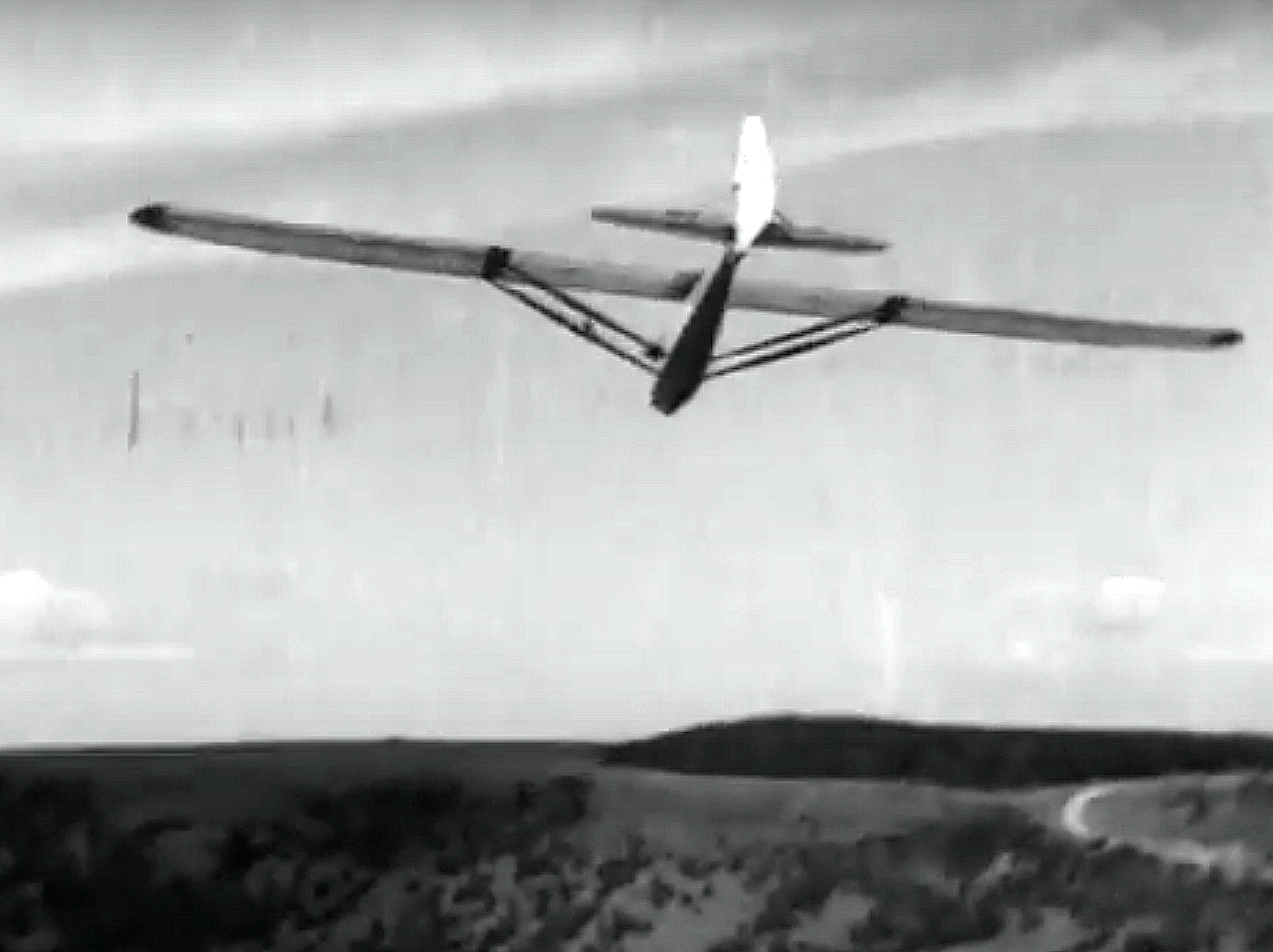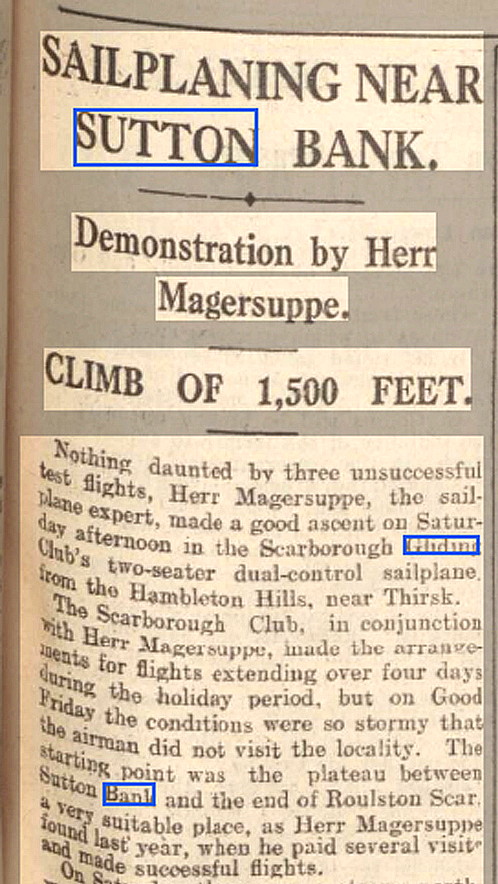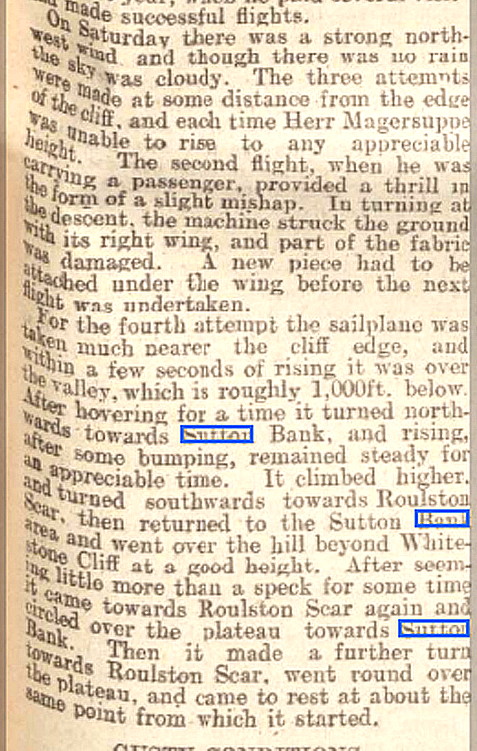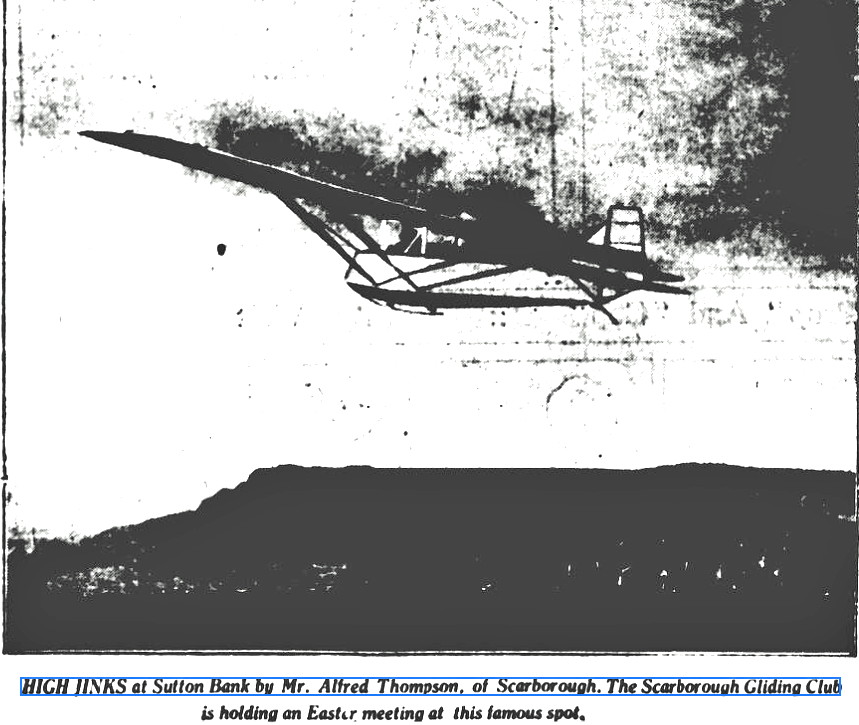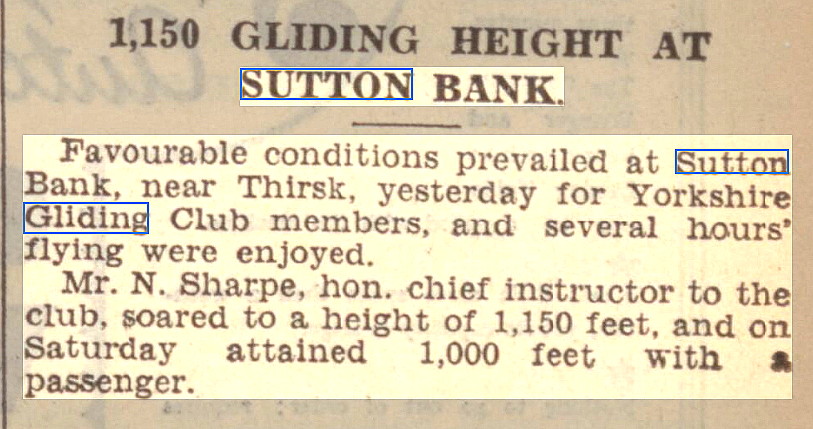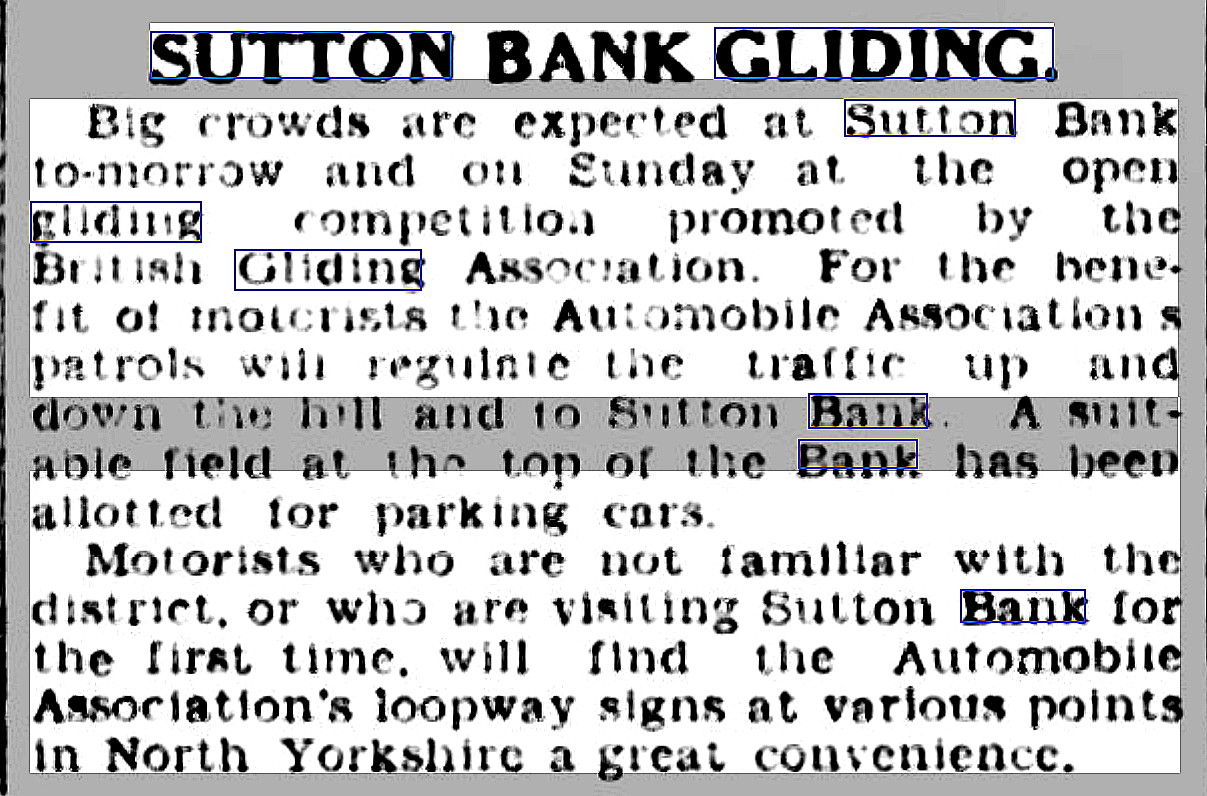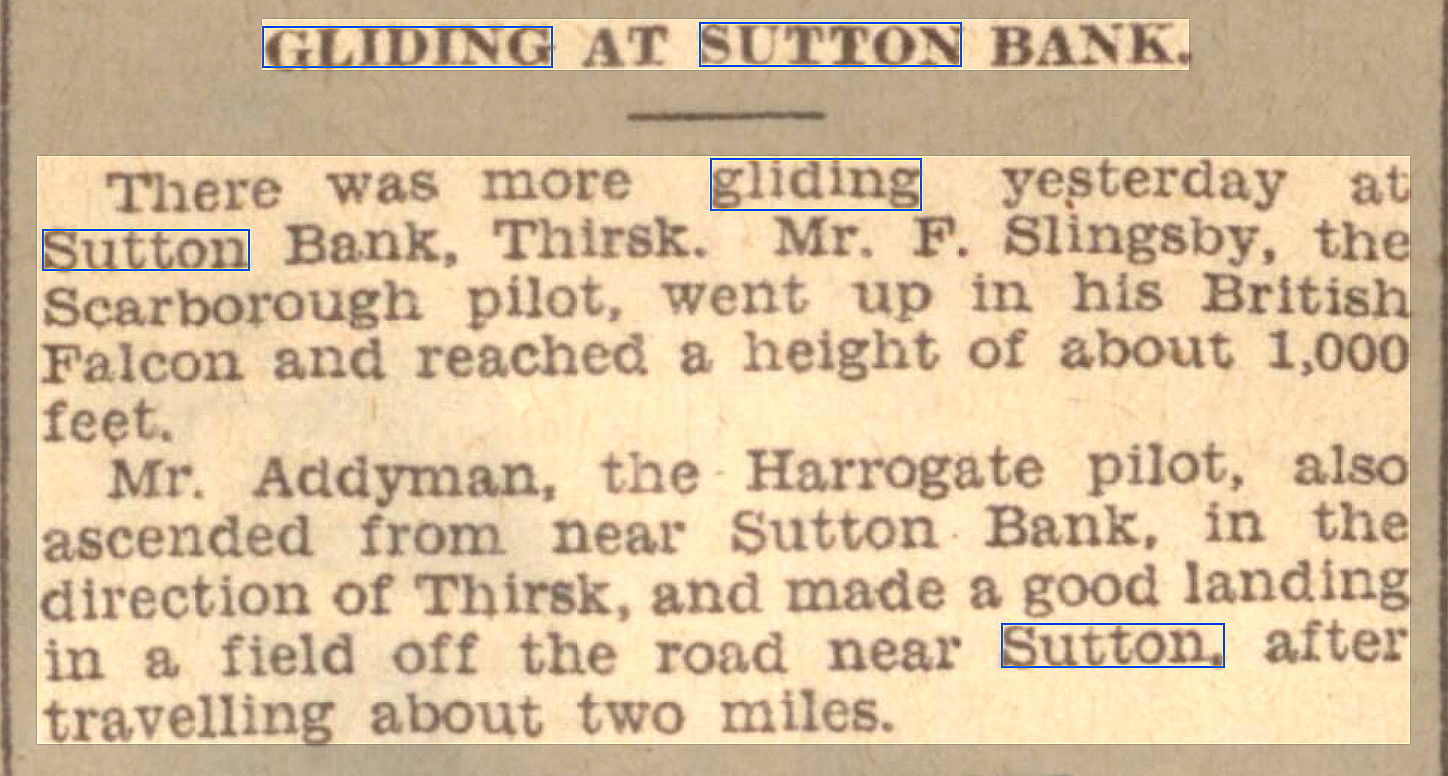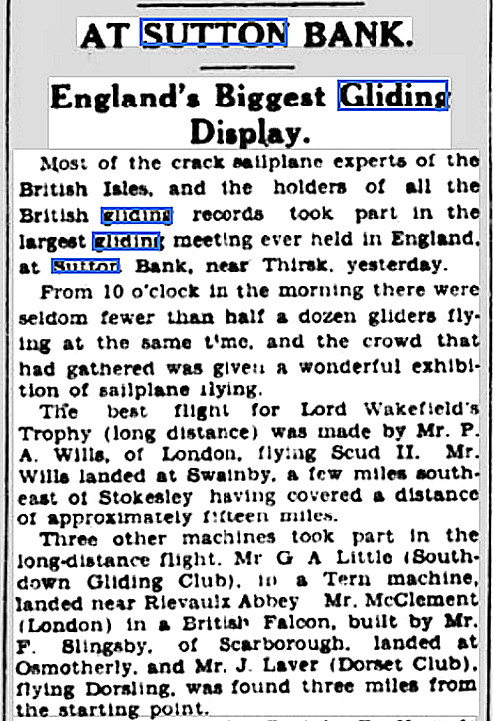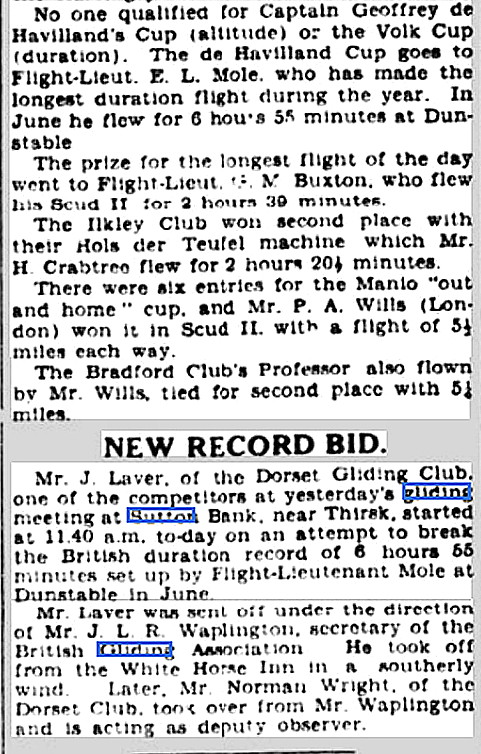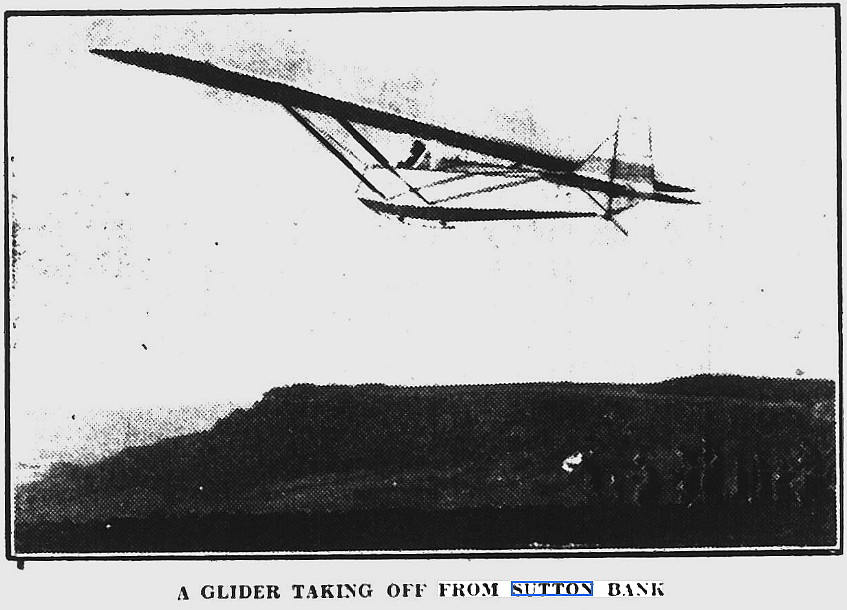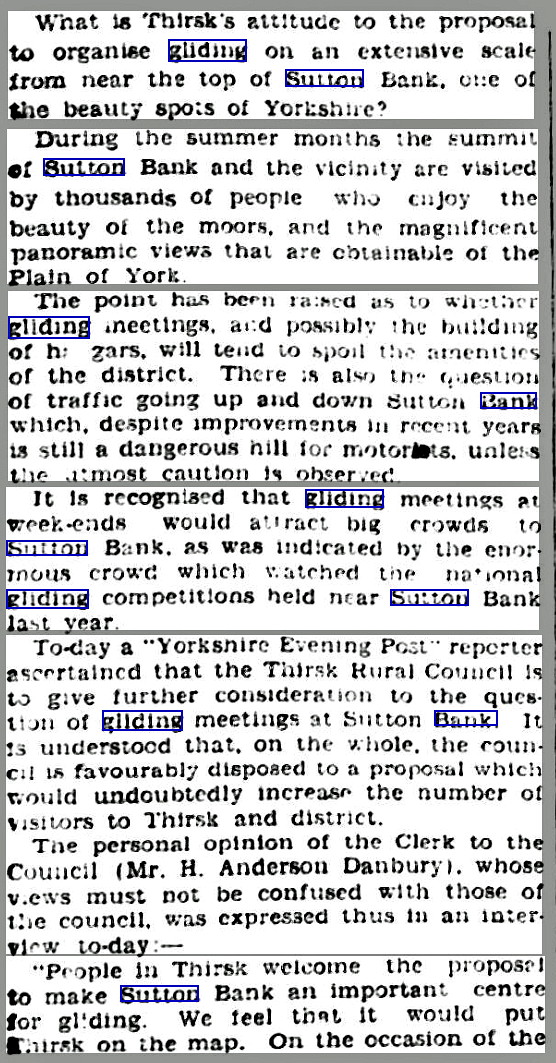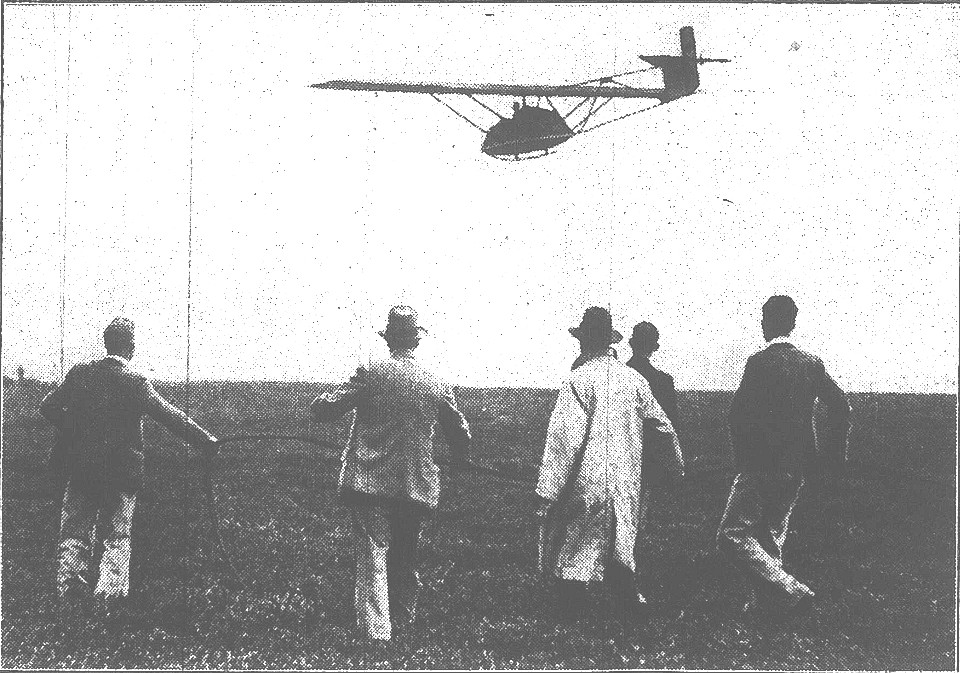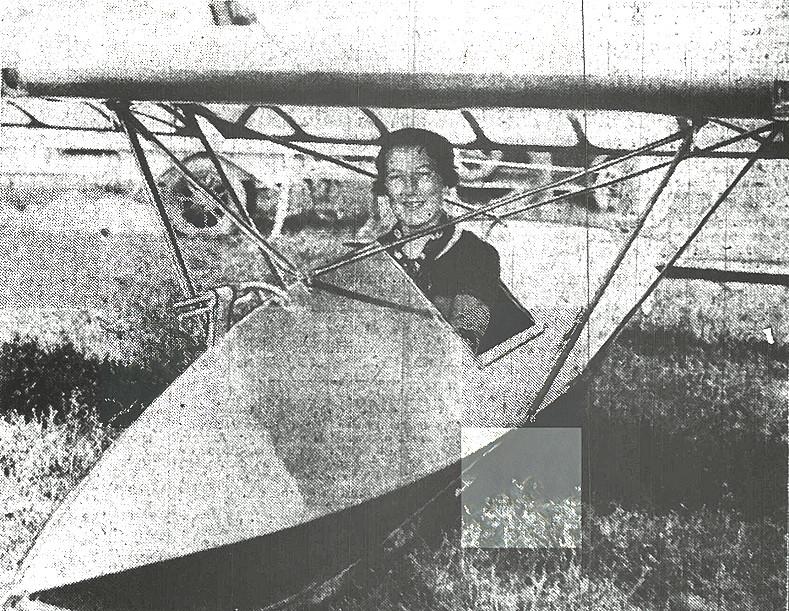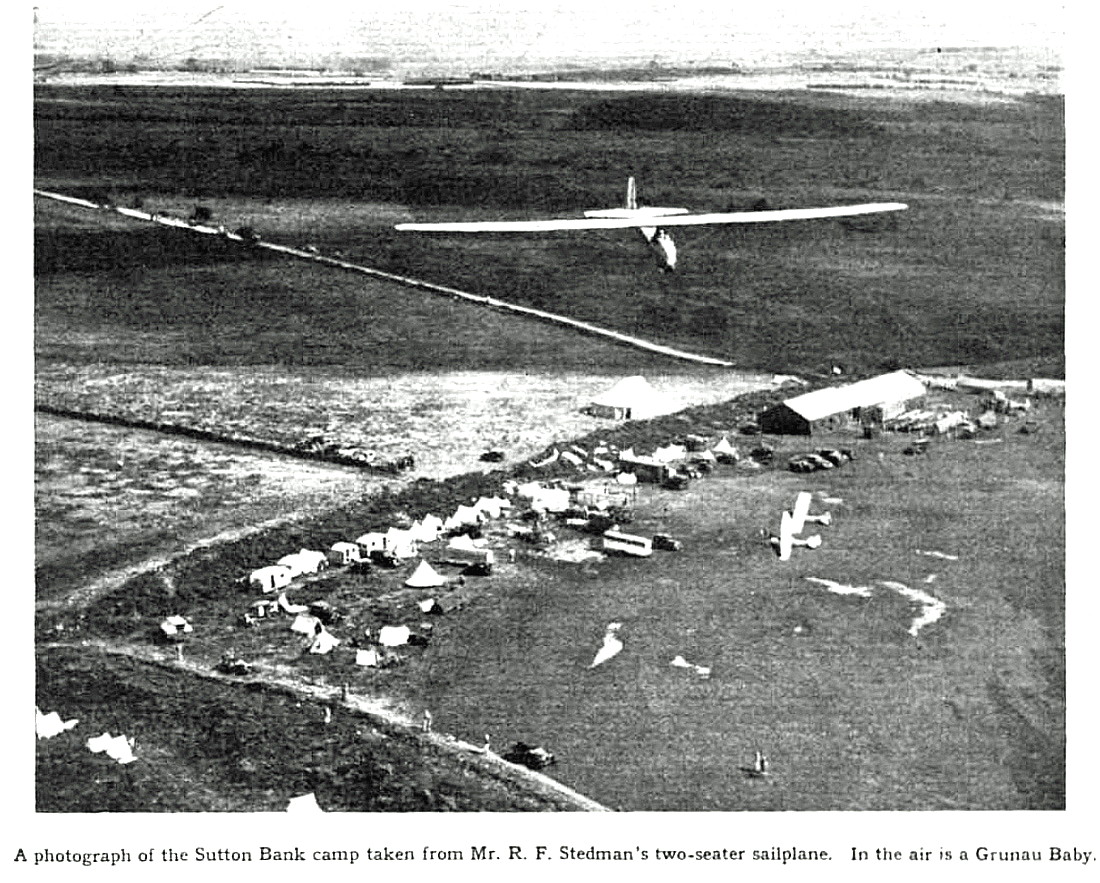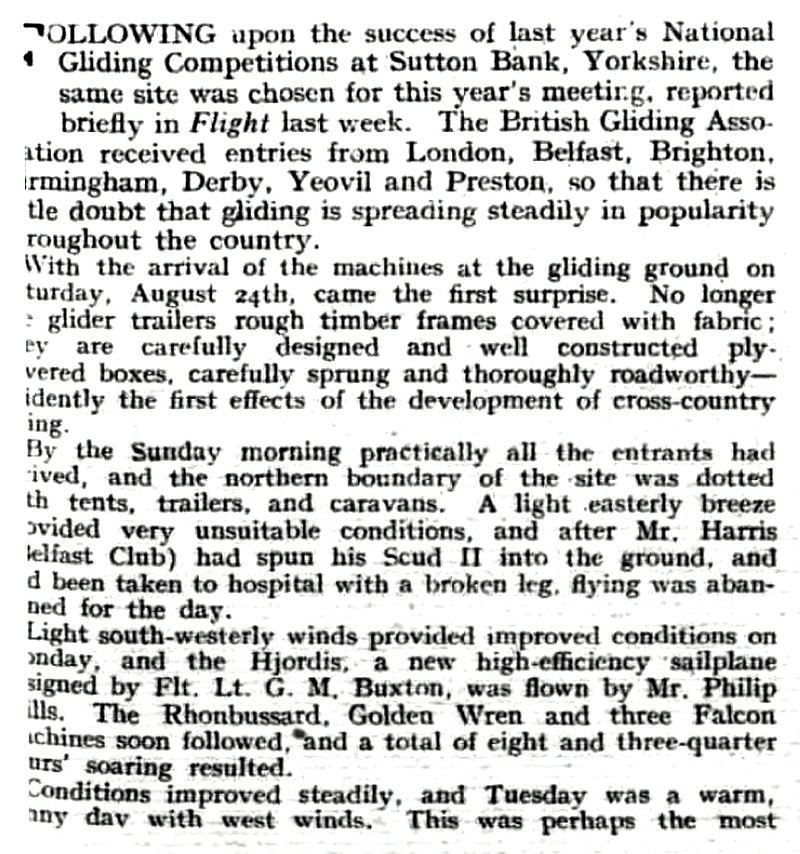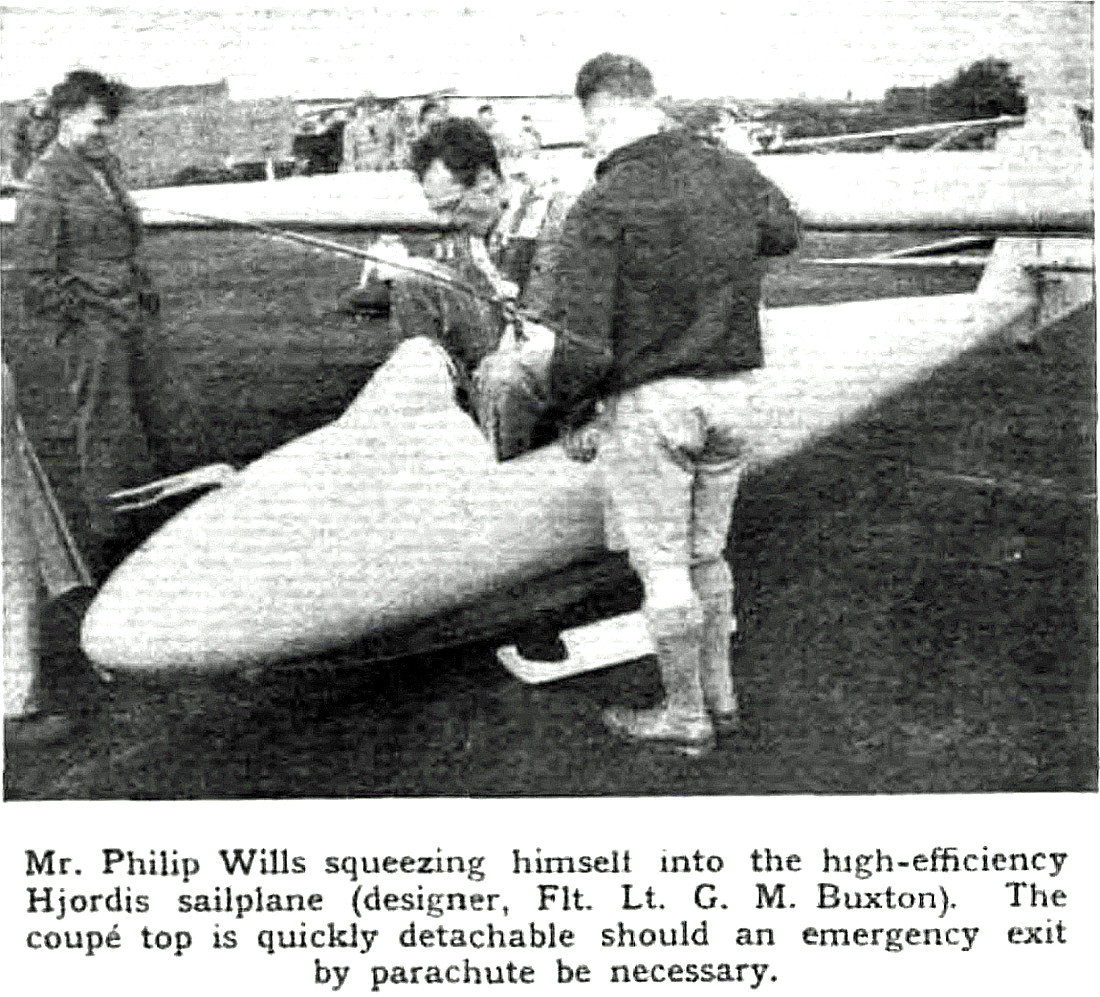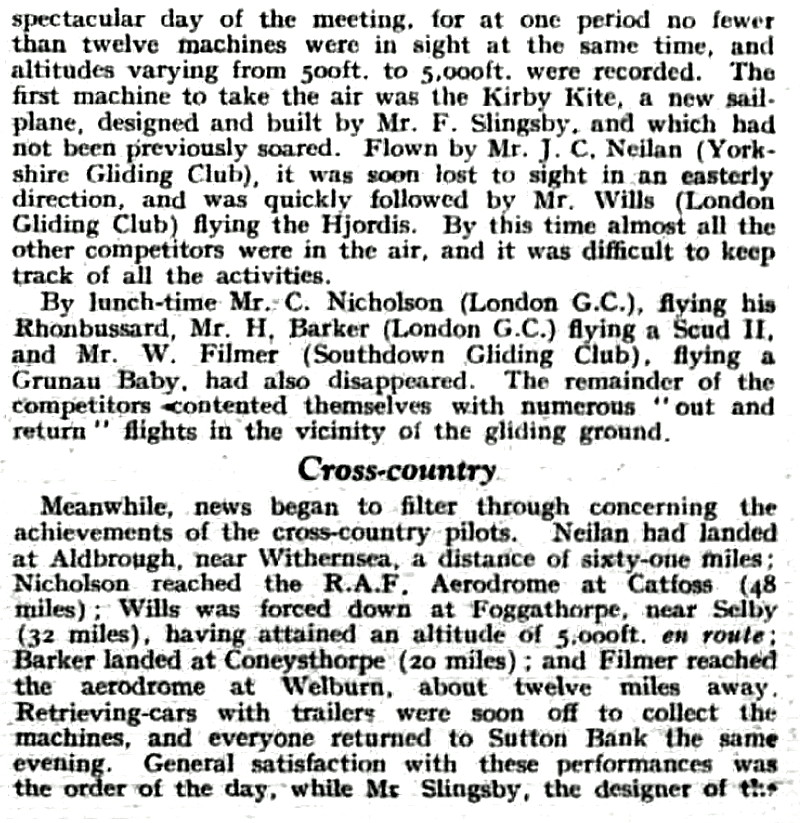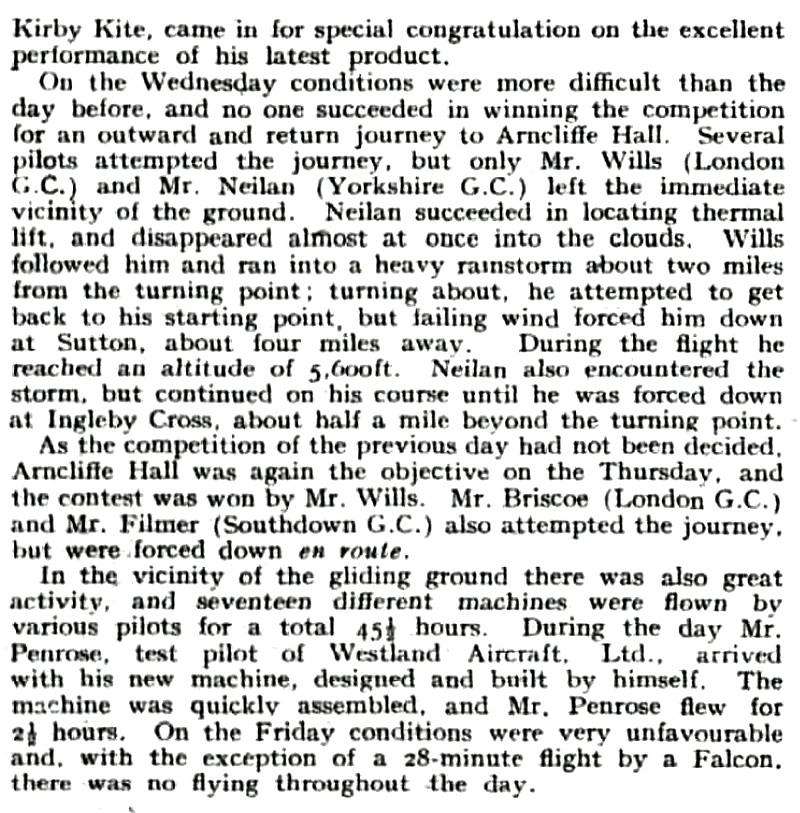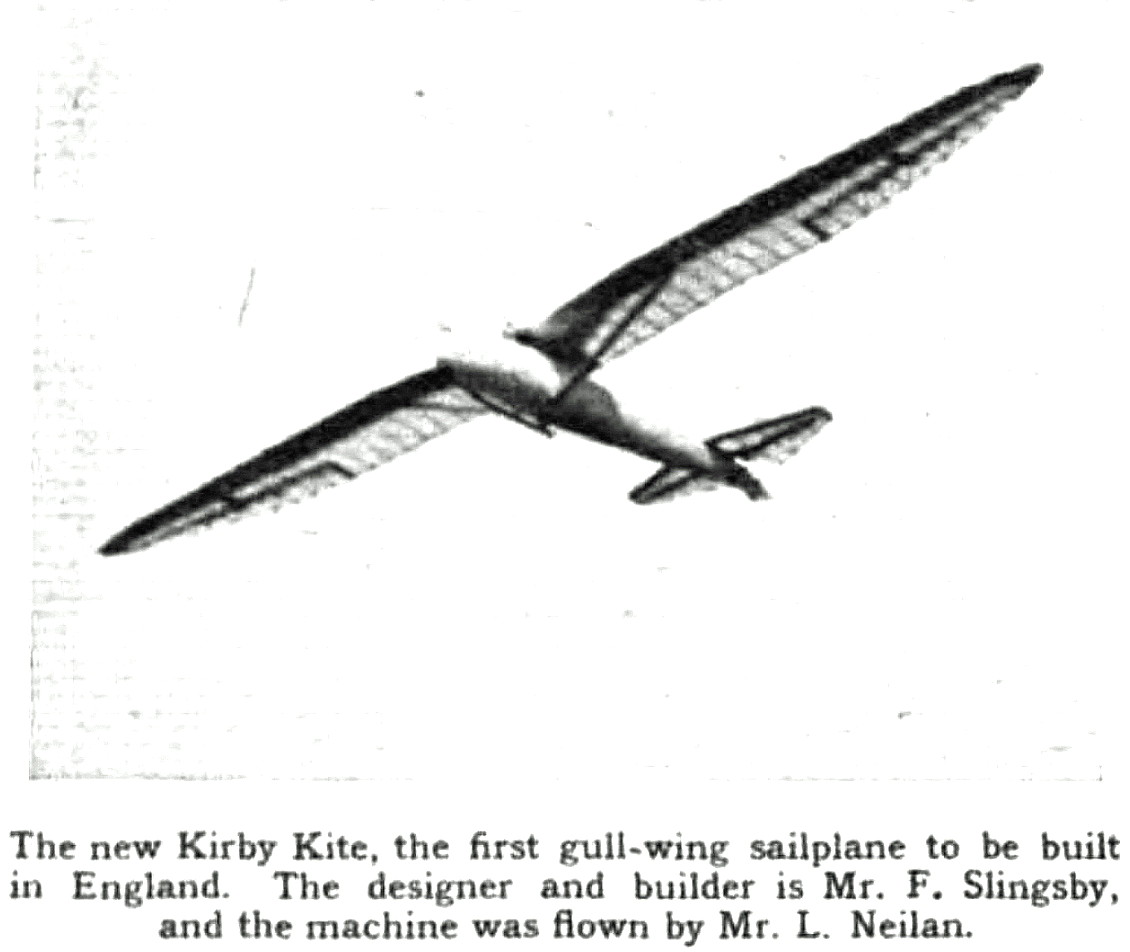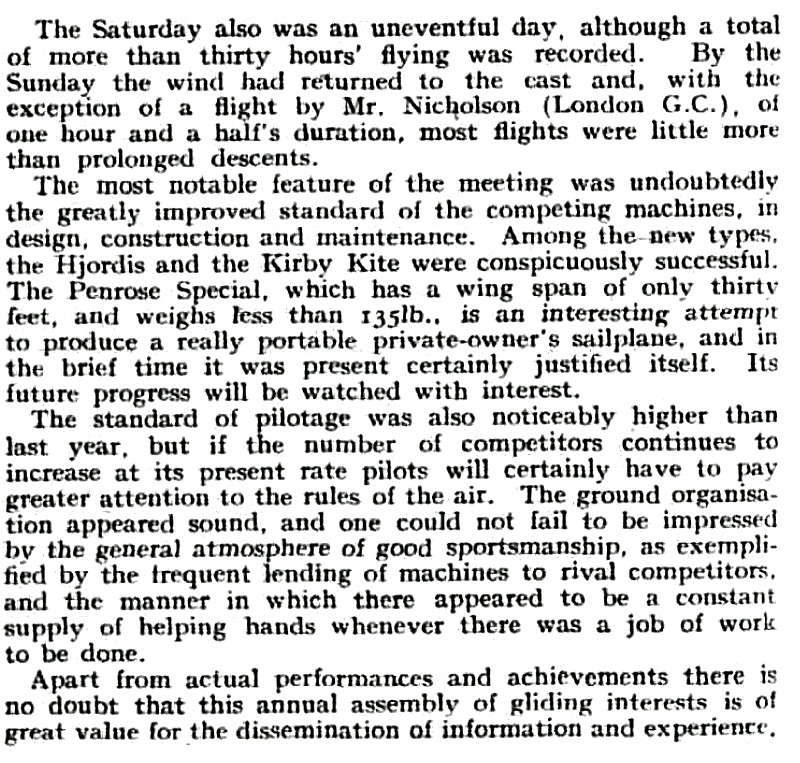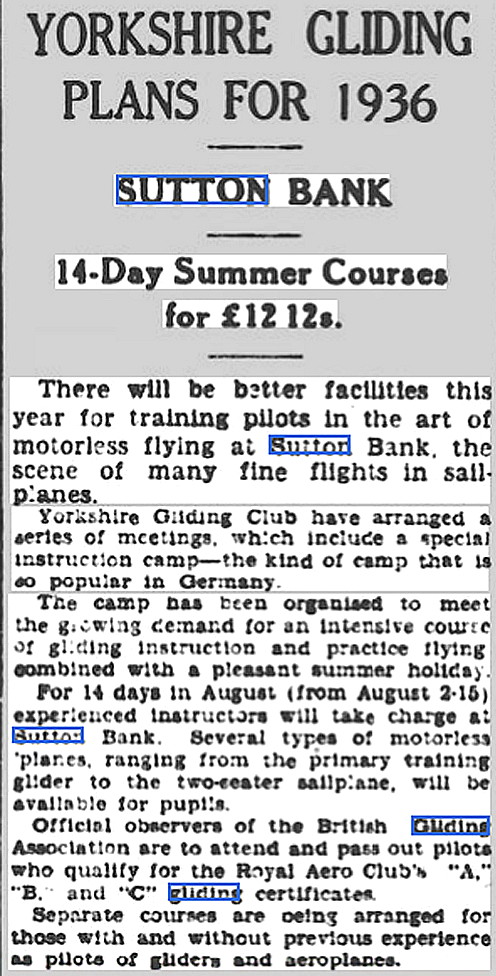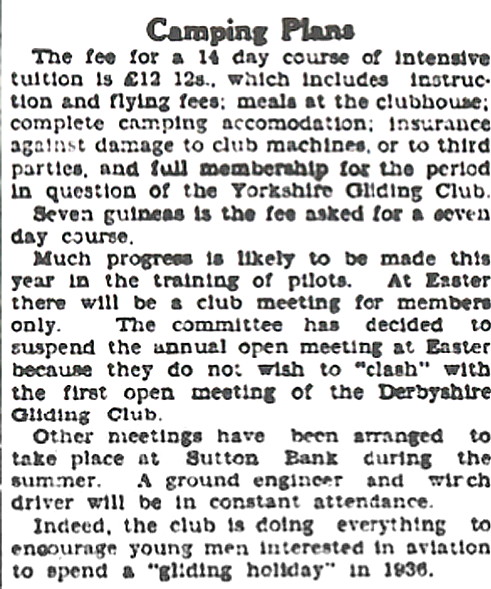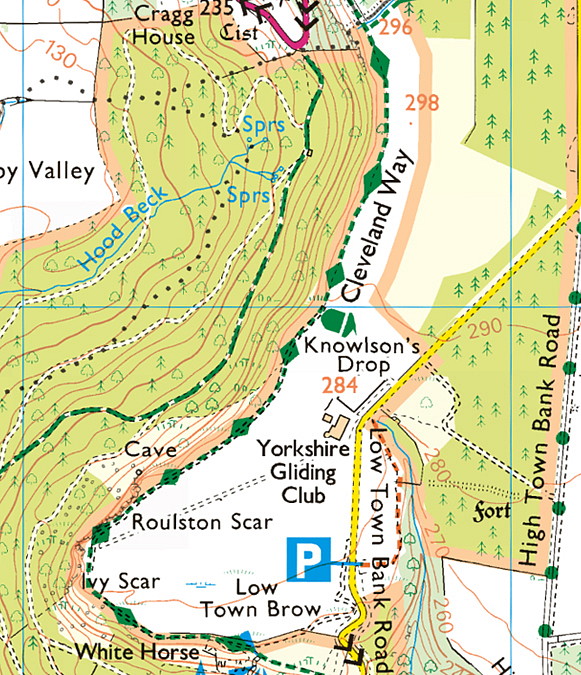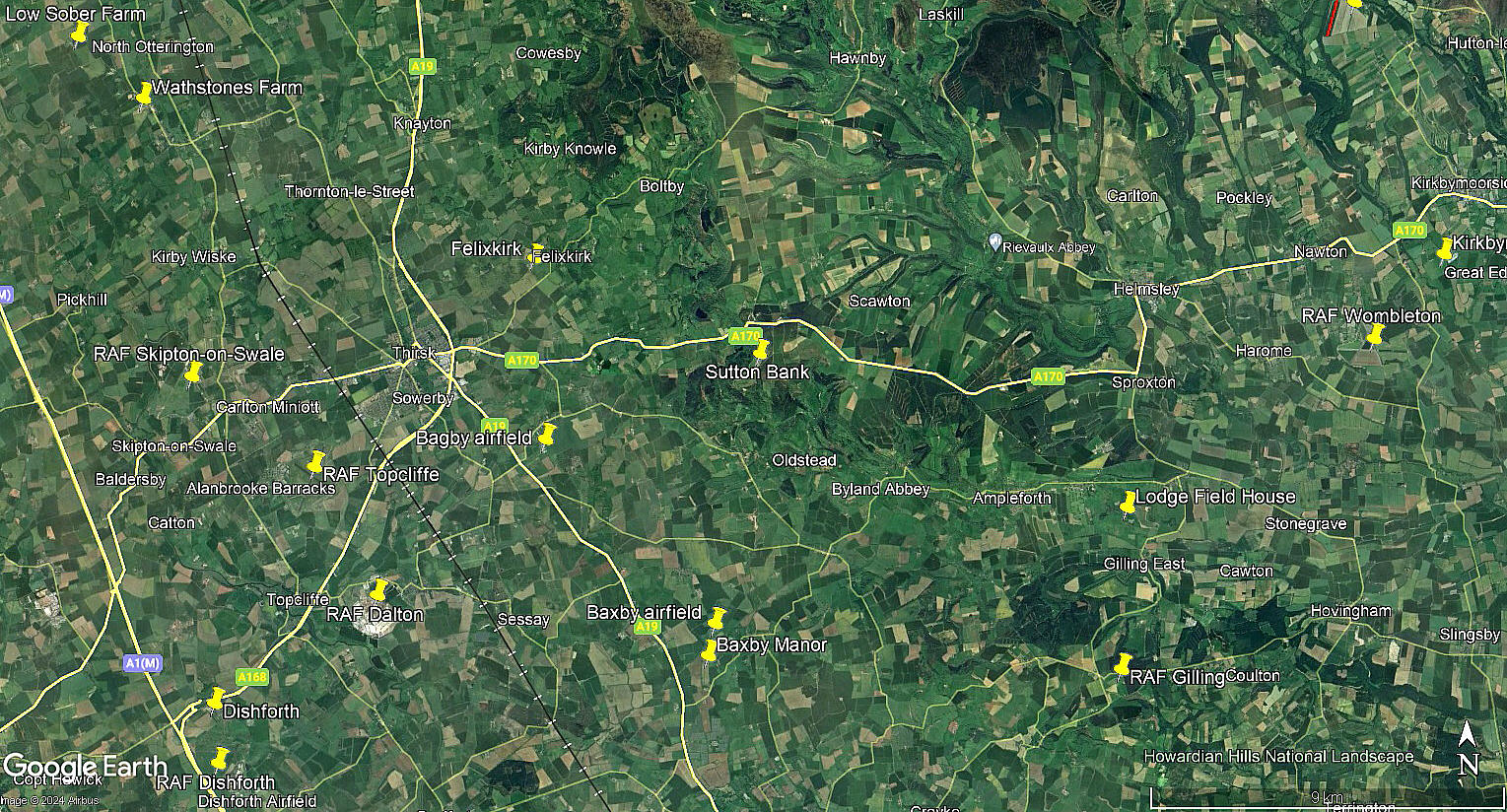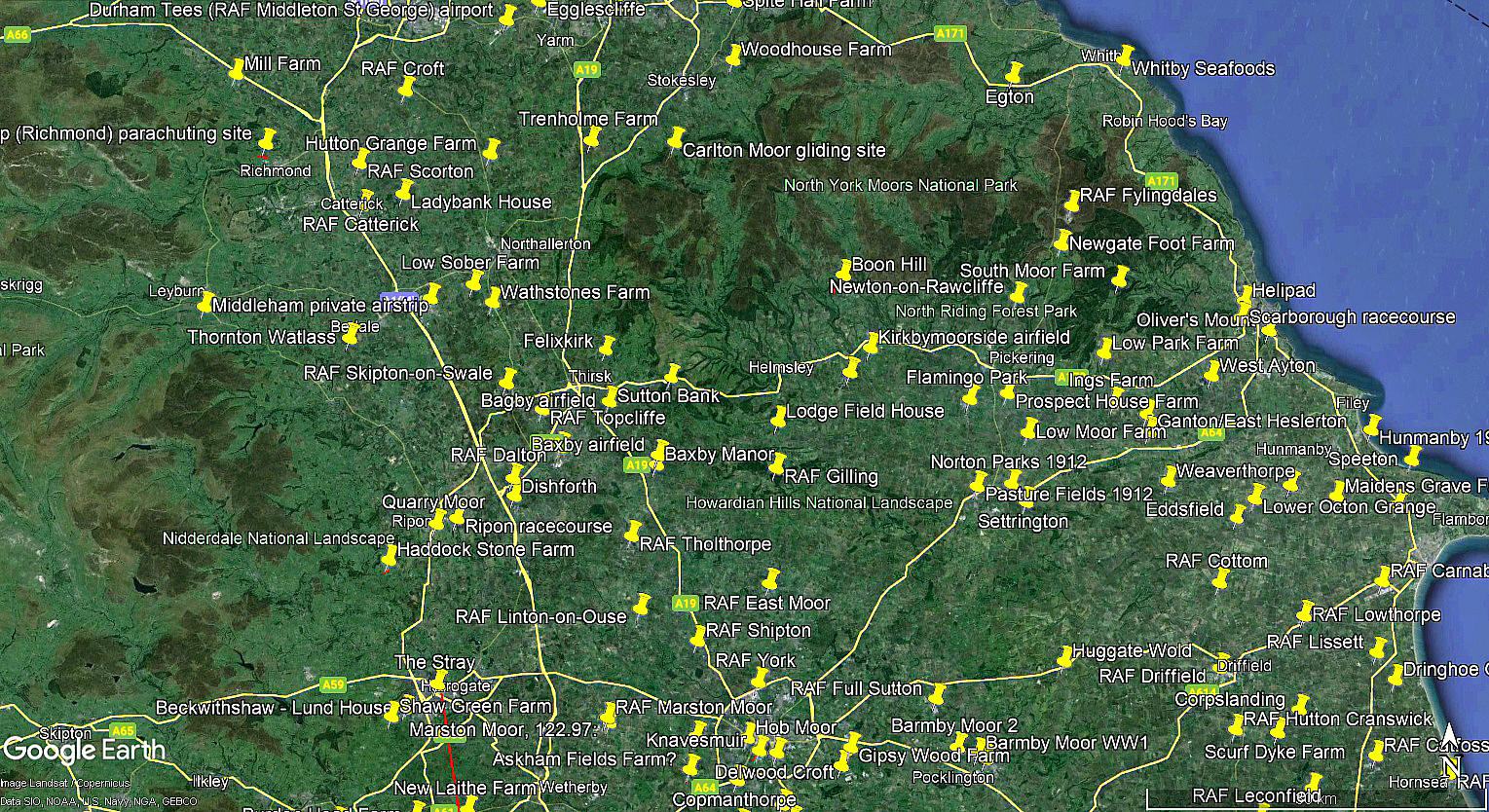Sutton Bank
SUTTON BANK: Gliding site
Note: All these four pictures were obtained from Google Earth ©
Operated by: 1980s to - : Yorkshire Gliding Club
Location: S of A170, 5nm E of Thirsk
Period of operation: 1933 to -
Note: These two pictures from postcards were kindly sent by Mike Charlton who has an amazing collection. See, www.aviationpostcard.co.uk
The glider in the second picture is a LET L13 Blanik, first flown in Czechoslovakia in 1956 and entering production in 1958. Unusual if not unique amongst gilders, the Blanik gliders were constructed from aluminium. High performance versions were built in the early years, but the very solid 'metal' construction led to it being claimed as the most produced glider type in the world, with over 3000 (including variants) being produced. Many were exported, especially to the USA, and quite a number are still flying.
And indeed, a few years ago, on the 28th September 2008, I was treated to two winch launches in the L13 Blanik OK3702 from Bobovice west of Prague in the Czech Republic. The reason they treated me to two winch launches, they explained, was because, as a A PPL, (flying powered aircraft), I would have no idea what was going on during the first launch. They were quite right too - a winch launch being I suppose - the next best thing to being sent up in a rocket - it was sensational!
Runways: 1990 to 2000 at least : E/W 549 grass NE/SW 732 grass
Note: An article in Light Aviation magazine, January 2012, states the runways were then: 24/06 600 and 02/20 800+
SOME OF THE PAST HISTORY (FROM THE YORKSHIRE GLIDING CLUB)
THE 1930s
The Yorkshire Gliding Club, as it is known today, was formed in 1934 by a group of pioneering aviators including famous names such as Fred Slingsby, Philip Wills and Norman Sharpe. Our airfield began life as a windswept heather moorland, with tracks cut into the heather to allow takeoffs and landings! Despite the primitive nature of the airfield (most airfields were similar in those days), famous aviators such as Amy Johnson joined the club after having gained her Silver 'C' at Dunstable.
Aircraft flown at this time included the Scud 2, Hols de Taufel and Dickson Primary. The club winch of the time was a Rolls Royce Silver Ghost, bought for £50 and converted for another £50! Buildings consisted of little more than wooden huts! In 1938, a horse was acquired to retrieve gliders and the winch wire! This proved successful until a Kite 1 hit 'Major' on its landing run. Thereafter when he heard the whistle of wind associated with a landing glider, the horse would gallop away - sensible horse!
Flying from Sutton Bank, Lieutenant Dean Drummond experimented with a two-way radio in a Kite 1. He later became famous in the Arnhem Landings during World War 11. By 1939, Slingsby Sailplanes Ltd were offering new gliders for the of £99. A Kirby Kite 1 cost £159! Sadly the outbreak of war ended gliding in the UK for its duration. Many members went on to serve with distinction.
THE 1940s & 1950s
The early post war years were very difficult for the club. Much of the early infrastructure had disappeared and few of the pre-war membership returned. Some of the key benefactors in the early years continued to offer financial support. In 1947, the club had acquired its first open cockpit side-by-side T21 trainer from Slingsby's. The model proved to be a superb training machine and T21s saw service well into the Sixties. In 1956, Henryk Doctor was appointed Chielf Flying Instructor. Henryk had a distinguished warservice flying Mosquitos. His dry sense of humour and unique training methods drew great repect from club members throughout his years of service as CFI.
THE 1960s
In the early Sixties the club made significant progress, encouraged by the vision and financial help of Eric Reed, chairman of the club at that time. Our unique circular clubhouse replaced the ageing wooden structures. Project to ensure the continued development and growth of the club were implemented over the remainder of the 20th century resulting in the club becoming one of the leading clubs in the country.
A MICHAEL T HOLDER GALLERY
We have Mike Holder, a great friend of this 'Guide', to thank for delving into the history of this location and providing the following items.
1931
This article was published in the Yorkshire Post and Leeds Intelligencer on the 16th April 1931. The photo was published in the Yorkshire Evening Post on the 6th April 1931.
1933
It appears that gliding activities here were exciting a lot of interest by this time, especially in October.
The Short article One was published in the Leeds Mercury on the 6th October 1933. Short article Two was published on the same day in the Yorkshire Evening Post.
The Short article Three however, was published, also in the Leeds Mercury, but on the 16th October 1933.
With its publication sandwiched between the three short articles above, this article appeared in the Yorkshire Evening Post on the 9th October 1933.
1934
1934 was a year that gained a lot of interest here, especially because the National Gliding Competition was held from the 1st to the 9th September.
Photo One was published in the Yorkshire Post and Leeds Intelligencer on the 12th May 1934. The article was published on the 5th January 1934 in the Yorkshire Evening Post. Photo Two was also published in the Yorkshire Post and Leeds Intelligencer, but this time on the 3rd September 1934. As was Photo Three which shows Mrs Mackie of the Ulster Gliding Club.
1935
This article published in Flight magazine on the 12th September 1935 describes some of the activities that year. Especially in this case the next National Gliding Competition and an associated Camp.
1936
The article in two parts was published in the Yorkshire Evening Post on the 30th January 1936.
The aircraft in the foreground is the ex crop spraying Piper PA-25-235 Pawnee G-BETM (ex N54927). This was operated by the Yorkshire Gliding Club from 28.02.91 until 27.10.22. Beyond is the Piper PA-18-150 Super Cub G-BJIV (ex N5972Z) which was also operated by the Yorkshire Gliding Club, but this time from 03.05.85 until 04.01.19. The local area and area views are from my Google Earth © derived database.
NOTES:
In the 1957 The Aeroplane directory, the Yorkshire Gliding Club fleet was given as: One S.G.38, seven Cadets, three Tutors, two T.21B and one Kite 2. Clearly one of, if not the largest gliding club fleets in the UK at that time.
GA powered aircraft may visit with prior permission. In 1977 it appears the following GA types were based here: PA-18 Super Cub 150 G-ARAN plus Beagle A.61 Terrier 2 G-ASAJ. Presumably both employed as tugs? Both of the Yorkshire Gliding Club along with the Slingsby T.61 Falke G-AYSD. Plus the privately owned Motor Cadet Mk.III G-AYAN.
If anybody could be kind enough to update these notes, this will be most welcome.
UP TO DATE UPDATES
Although being an utter novice, only having had a few glider flights mostly with aero-tows, the article in Light Aviation magazine mentioned above caught my attention. It appears that the Yorkshire Gliding Club have, to a large extent, pioneered the use of a Eurofox for glider aero-tows, and are now, (in 2021), using their third example. G-MOYR was the first, followed by G-CIOF and latterly G-HETY.
At the start many were sceptical that such a light aircraft could safely manage aero-tows. Compared to even a Piper Super Cub, let alone a Piper Pawnee, it seems clear that many would have doubts. But - it has been a great success.
We'd love to hear from you, so please scroll down to leave a comment!
Leave a comment ...
Copyright (c) UK Airfield Guide















